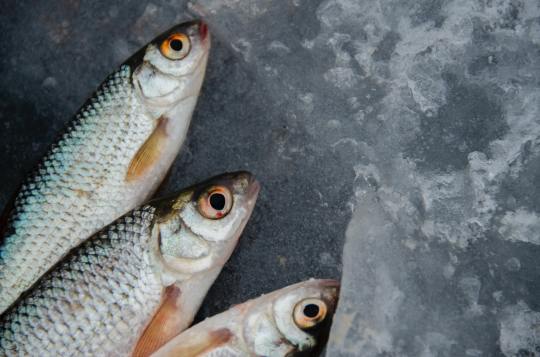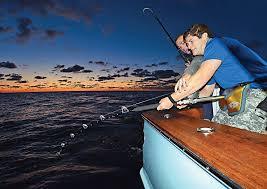Holding a bachelor's degree and masters degree in business administration from Boston University and Binghamton University, respectively, Brad Berfield is an experienced distribution and logistics professional who has held executive roles with multiple nationwide corporations. Brad Berfield most recently served as vice president of distribution and logistics with Coldwater Creek, where he maintained profit and loss responsibility for all distribution-related operations across 340 premium stores and 30 factory stores. From 2007 to 2013, as Director of Distribution for Wegmans Food Markets, Berfield coordinated the shipping of millions of cases per week through the company's nine distribution centers. He worked for Walmart in the previous 10 years, during which time he rose from supply chain strategy manager to general manager of a 1.3-million-square-foot general merchandise distribution center located in Pennsylvania. In the early 1990s, he accrued relevant production and operations experience with Brookstone Company, Amphenol Interconnect Products, and Calder Stores. Beyond his professional pursuits, Berfield donates to the Nemours Fund for Children's Health and enjoys boating and fishing in his free time.
Don't wanna be here? Send us removal request.
Text
Fish Species to Catch and Cook in North Carolina

An experienced businessman and entrepreneur from Charlotte, NC, Bradley “Brad” Berfield is a graduate of Binghamton University where he earned an MBA. Brad Berfield previously served as the vice president of distribution and logistics with Coldwater Creek, Inc. and as a director of distribution at Wegmans Food Markets. When away from work, Bradley Berfield likes fishing. Cobia, or Rachycentron canadum, is one of the easiest fish to catch in North Carolina. Due to their wide mouth and flattened head, many people mistake them for sharks or catfish. The Cobia species, which is also known as the lemonfish, grows quickly and makes for good eating in a variety of recipes. Another type of fish that is relatively easy to catch in North Carolina is the Sheepshead, or Archosargus probatocephalus. The sheepshead has teeth similar to a sheep, hence the name, and it is also called the convict fish due to its black and white stripes. They also got this name because they often steal the angler's bait. The Tripletail is another fish that can be caught in NC, and it is known to put up a fight. It easily blends in with surface algae or floating debris, but can be spotted due to its tendency to pretend to be a floating object while waiting for its prey.
0 notes
Text
Steelhead Fishing - An Overview

Bradley "Brad" Berfield is a business executive with over 20 years of experience in the logistics and distribution management industry. When not at work, Bradley Berfield enjoys fishing and has caught mahi mahi, largemouth bass, walleye, and steelhead. While commonly called steelhead, the species is actually rainbow trout that has access to saltwater. Since steelhead and rainbow trout return to where they hatched to spawn, rainbow trout occur in exclusively freshwater locations and steelheads live in salt water but still return to freshwater to spawn. This is also why there is a summer season and a winter season, called runs, for steelhead, since this is when they return to spawn. While steelhead can reach up to 55 pounds, most are smaller and can be fished without the specialty lines and rods needed to catch 50-pound fish. Firstly, regardless of the bait or lure used, it helps to spend time casting the hook throughout the area before moving on. This helps increase the chances of catching fish as there tend to be areas that are denser in certain types of fish and areas that are more scarce. In addition, steelhead are known for being particularly fond of fish eggs and many find this to be an effective bait.
0 notes
Text
Outboard Engine Maintenance Basics

Bradley “Brad” Berfield has a career in factory production and logistics/supply chain management that spans a quarter of a century. In his free time, he loves getting out on the water on a variety of boats. As such, Bradley Berfield stresses the importance of maintaining an outboard engine to make it last. Although many boaters know that they have to flush their outboard engines after each saltwater excursion, experts recommend doing the same for trips on freshwater. This simply involves running the engine in the air, allowing the water in the pump to clear while checking for adequate flow. When this process is done, boaters should disconnect the engine fuel line and burn the remaining gas in the carburetor. They should also check the engine for potential water and/or fuel leaks, and treat engine components with appropriate anti-corrosive/lubricating agents if the engine will not be run for an extended period. Although they need not attend to these matters after each boat outing, boaters should thoroughly assess the condition of fuel components on a regular basis. It is also important to conduct periodic checks of tank vent aspiration and ensure that no water is entering the fuel system.
0 notes
Text
The Advantages of Intermodal Transportation

Transportation professional Bradley “Brad” Berfield has a wealth of experience in distribution, logistics, and supply chain management. Having served in various organizations for more than two decades, Brad Berfield is an expert in devising intermodal transportation solutions. Intermodal transportation is the use of more than one form of transport such as air, road, rail, and water to move containers. Cargo is packed into containers which fit easily onto trucks, trains, ships, and airplanes and is transported over long distances by these various modes. Intermodal transportation has achieved widespread use because of its benefits to both shippers and logistics firms. For one, the system is very cost effective. Using rail to move containers over long distances saves substantial amounts of fuel over trucking, and because the containers need minimal handling, switching between different modes is done with little manpower. Another benefit of intermodal transportation is better quality service. Because the cargo in containers does not need to be removed, it takes less time to switch between modes of transport and the cargo is kept intact and safe throughout its journey. In addition, there are fewer loading and unloading restrictions, hence shipping is quicker.
1 note
·
View note
Text
Fishing Tips for Anglers Wanting to Catch Tuna

A resident of New Castle, Delaware, Bradley (“Brad”) Berfield has more than two decades of experience working in distribution. He recently worked as the Vice President of Distribution and Logistics for Coldwater Creek, Inc., in Parkersburg, West Virginia. In his spare time, Brad Berfield enjoys fishing, including for tuna. Here are a few tips for anglers that are fishing for tuna: - Fish during certain times of the day and year. Summertime is typically the best time of year to catch tuna, as they feed closer to the surface in the warmer months. Anglers should aim to fish early in the morning or around dusk. - Be prepared. Tuna come in various sizes, with some becoming quite large. Anglers should have an idea about what size tuna are common for the area in which they’re fishing. They should also keep in mind that tuna are powerful, so they might try to swim away rapidly when they take the bait. As a result, anglers should wear down the fish and apply pressure when needed, but not so much so as to break the line. - Watch for other water animals. Birds, dolphins, and turtles oftentimes gather near schools of fish, particularly tuna. Anglers should watch the water carefully because these other animals might signal that tuna are nearby.
0 notes
Text
Cleaning a Cast Iron Pan

Brad Berfield, a logistics executive, is an avid cook in his free time. Brad Berfield appreciates the value of high-quality cookware, and he owns cast iron pans made in the early 20th century. Proper cleaning plays an essential role in the longevity of a cast-iron skillet. The cleaning process begins when the pan is still warm, as this is the ideal time to wipe its surface with paper towels to remove oil and food particles. The cook can then run the pan under hot water and scrub with a non-abrasive pad to lift away any remaining debris. Cooks should be careful to avoid steel wool or other metal scrubbers, as these can spoil the pan's surface. One can either towel-dry the pan or place it on the stove over a medium-low heat. Stove-drying may be the easiest way to ensure that all moisture has evaporated. The next step is to lightly coat the pan with approximately 1/2 of a teaspoon of oil and to wipe the pan with oiled paper towels until the surface is smooth and no excess residue remains.
0 notes
